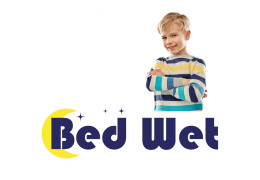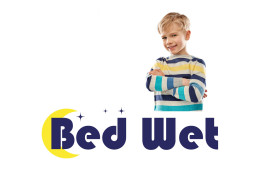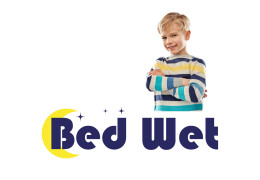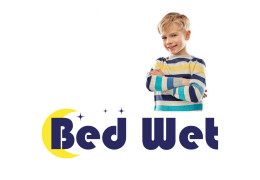An alarm is one of the most effective treatments for nocturnal enuresis.It works by waking the child as soon as the first drops of urine are present , which allows the brain to gradually learn to recognize the signal of a full bladder during sleep.

Unconventional therapies for bedwetting
Thinking outside the box when it comes to bedwetting:
Finding alternatives to traditional approaches to bedwetting isn't difficult, but deciding to try them is another matter entirely. From acupuncture to homeopathy, there are many options, and even more questions. An open mind, independence, and a willingness to do a lot of research are essential for parents wanting to treat their children's bedwetting.
Chiropractic care
When it comes to bedwetting, the most frequently mentioned alternative approach is chiropractic. Although once considered a complementary technique, chiropractic spinal manipulation is now recognized as a medical treatment. Some insurance companies even cover these services for specific conditions, such as those affecting the spine. Chiropractic care for bedwetting targets the bladder by manipulating the lower spine and pelvis. Since the nerves of the muscles controlling urine flow are connected to the brain via the spine, it is believed that proper spinal alignment can address slow processing of messages or incomplete signals between the brain and the bladder. Evidence supports this approach: a controlled study, presented in 1993 at the National Chiropractic and Pediatrics Congress, examined 46 children treated by chiropractors for 14 weeks, comparing the results to those of 15 control subjects. The treated children had 17.9% fewer incidents after treatment.
This study confirmed the findings of other research demonstrating the positive results of chiropractic care.
The idea remains controversial, however. "Just bring it up at a pediatric or neurology conference and watch the sparks fly," says William Cockburn, a chiropractor in Whittier, California, who, in his family practice, has seen bedwetting cases respond in 50% of cases within 30 days. He believes parents and chiropractors should communicate better about the causes and treatment options. Some chiropractic experts want more evidence. "There is little clinical scientific literature on spinal manipulation therapy for bedwetting," says Joseph C. Keating of Phoenix, Arizona, vice president of the Association for the History of Chiropractic, who has written frequently about the need for research supporting chiropractic care. "It's important to remember that the spontaneous remission rate for bedwetting in children is about 15% per year."
Hypnotherapy
Hypnosis is another option for parents seeking non-invasive treatment methods for bedwetting. The hypnotist works with the unconscious brain to establish positive connections with a conscious goal: waking up at night to go to the bathroom. Instead of using negative reinforcement as an alarm, the child learns through self-hypnosis and visualization to respond to the physical symptoms of a full bladder before an accident. This method emphasizes relaxation, self-control, and independence. The National Kidney Foundation reports that children who could benefit from this treatment generally show signs of improvement after four to six sessions, but also says that more research is needed to determine its true effectiveness.
Hypnosis exists outside the realm of conventional medicine. While generally recognized as a valid approach for certain problems, hypnosis is rarely recommended by pediatricians and other healthcare professionals to parents seeking help with bedwetting. This may change once medical researchers begin to gather more data on hypnosis under controlled conditions. The University of Michigan's Department of Pediatrics reported that hypnotherapy stopped bedwetting 43 to 73 percent more effectively than imipramine—a prescription bedwetting medication—using a method described in the book "Dry All Night."
Touch-based approaches
Between the chiropractic approach, which is very physical, and the hypnotic approach, which is very cerebral, there are also many alternative solutions involving touch. Like many alternative and complementary methods, these therapies aim to restore the body's energy balance and are adapted to different problems and individuals.
Acupuncture
One of the therapies most familiar to Westerners originated in China and is still practiced there. Using needles as thin as threads, the acupuncturist targets the body's energy flow. A 2001 study of 50 children with primary bedwetting reported that 43 children were bedwetting-free in less than six months thanks to traditional Chinese acupuncture. But treating American children who fear needles with acupuncture is a challenge in itself. "I don't wear a white coat," says Sarah A. Steed, a licensed acupuncturist in Sperryville, Virginia. Steed says she sits on the floor with the child if they are more comfortable that way, and she has even seen one fall asleep during treatment. The idea of sticking needles into children remains a hard sell to most young Americans and parents who are unfamiliar with the practice. Fortunately, there are other methods that adhere to similar underlying philosophies, and without needles. These include acupressure, electroacupuncture, shiatsu, and reflexology.
These therapies involve applying pressure to accessible parts of the body corresponding to the internal organs believed to be affected. In the case of bedwetting, the targeted organs are usually the bladder and kidneys. Parents are often encouraged to learn these techniques from therapists so they can use them at home.
Homeopathy
Homeopathy is a 200-year-old therapy, pioneered by a German physician skeptical of the pharmacists of his time. In homeopathy, diagnosis is far more comprehensive and personalized than in conventional Western medicine. Two people with similar symptoms may be treated with entirely different remedies due to differences in mood, sleep patterns, or symptoms elsewhere in the body. Homeopathic remedies are based on a "rule of similars" and contain extremely diluted doses to stimulate the body's natural defenses. Common remedies for bedwetting include horsetail, causticum, belladonna, lycopodium, and pulsatilla. Although it is widely acknowledged that homeopathy does not cause side effects, homeopaths and conventional doctors have long been suspicious of each other. Proponents from both sides are now teaming up to conduct scientific research on the subject. The World Health Organization states that homeopathy is the second most widely used practice in the world after conventional Western medicine.
What is suitable for my child?
Remember, bedwetting isn't your child's fault and it's not due to their laziness. And even though there's no known cure, you and your family will need to choose a method that works for your child. You'd be better off talking to your doctor before trying any different treatments. And keep in mind that all the methods mentioned above are experimental—some may work for your child, others may not. "We consulted every medical expert I could find when my daughter became a teenager," says Virginia, the mother of a 14-year-old who wets the bed. "Then we tried alternative therapies. None have worked yet, but we're going to keep trying because we want our daughter to know that all avenues have been explored."
Even if none of these methods work for you, or if you're tackling bedwetting with different approaches, using disposable underwear remains a non-invasive way to address the problem. It's good for a child's self-esteem to wake up dry, and it also means less laundry for you.








Latest comments